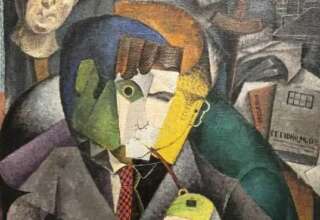
The descriptions by Ilan and by Daniella and Orna are consistent with findings of Maor et al. (2020), who described the government’s lack of credibility and partisan decision making in the early stage of the pandemic. Moreover, their article was written in May 2020, when Israel was in an excellent state in terms of controlling the pandemic. Between May and November, however, the situation in Israel deteriorated to the point where a second lockdown period was declared. The public’s despair deepened. The government’s decisions, designed to lower infection rates, exacerbated people’s sense of loneliness and economic hardship. The anxiety and uncertainty triggered by the early phase of the pandemic were aggravated by economic strife.
Frequently reversed decisions heightened the sense of uncertainty and mistrust, and health-related instructions were increasingly interpreted as the whims of an undependable ruler that should be rejected. In Daniella and Orna’s report, masks represent people’s government authorities that are the cause of the anger and disappointment. Their group members’ anger is channeled to the desire to “settle the score” with the masks. Emotions such as these led to the wave of social protest on which I elaborate below. From a societal perspective, the social protest can be seen as an expression of the desire to “settle the score” with the government officials in power.
Challenges for Patients and Therapists
Covid-19 caused changes and created hardship in all areas of life, including psychotherapy. The new social distancing guidelines had a dramatic impact on familiar therapeutic settings, as Judith described with reference to her private clinical work, and how the crisis completely transformed her therapeutic routine:
Our first [group] meeting (since Covid erupted) took place with masks. It was very strange. It was very different — both in the discourse and in the tension, what was allowed, what was forbidden. It more or less shuffled the cards and the setting.
Therapists in the public healthcare system were also forced to deal with dramatic changes, as Sheerie described:
Hospitals were forced to adjust, adopt and adapt to the Ministry of Health’s ever-changing regulations in the COVID-19 wave. All outpatient groups have been stopped, and patients have received one-on-one interventions only. At the same time, inpatient group are minimized to small, four-person groups that must maintain two meters of space from each other.
Some clients left therapy altogether, which affected therapists’ workloads. In her interview summary, Judith described why several new clients left therapy:
It is also interesting to note that in my clinic, new patients “declared a break” and actually dropped out. … Moving to Zoom made it so much more complicated to create safe space for them. In addition, the Covid19-related economic anxiety also contributed to the decision to quit treatment.
Others, such as Martha, reported continuity of treatment, especially after the end of the first lockdown:
After lockdown ended, the therapists at the Bowlby Center joyfully returned to therapeutic work in the zoological setting yet were overwhelmed by uncertainty regarding who would be returning and who would not continue. First to return were most of the children. This speaks to our connection [with them] and the importance of the field in their lives.
There were also many patients who came to therapy with a deep intention of doing the work. I elaborate on this point below, under therapeutic opportunities.








